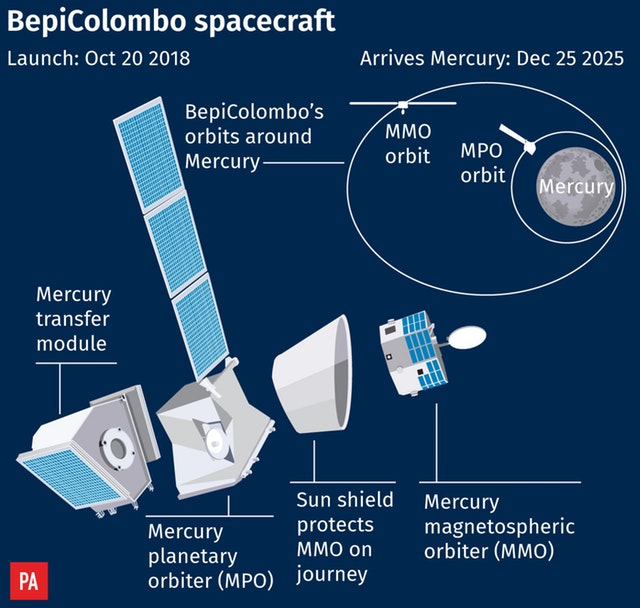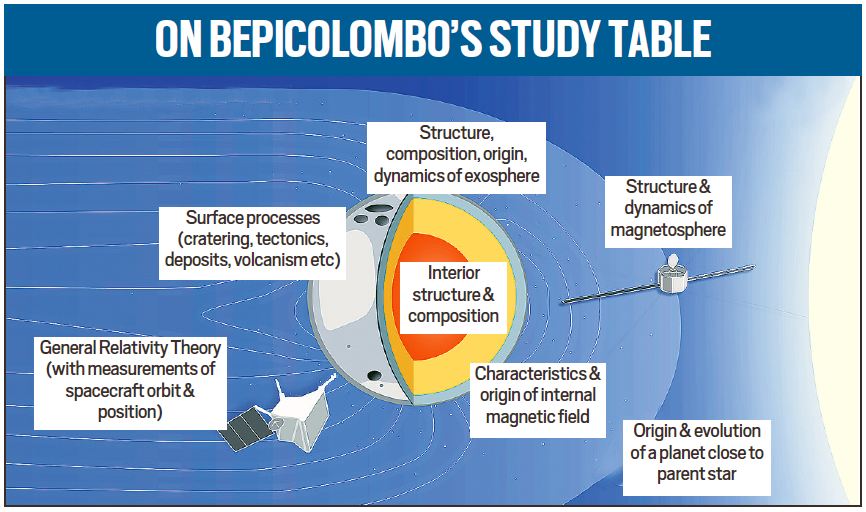7667766266
enquiry@shankarias.in
Why in news?
The European Space Agency (ESA) and the Japan Aerospace Exploration Agency (JAXA) successfully sent two probes on a joint mission to Mercury.
What is the mission on?
What are the components?

What are the objectives?

Source: Indian Express